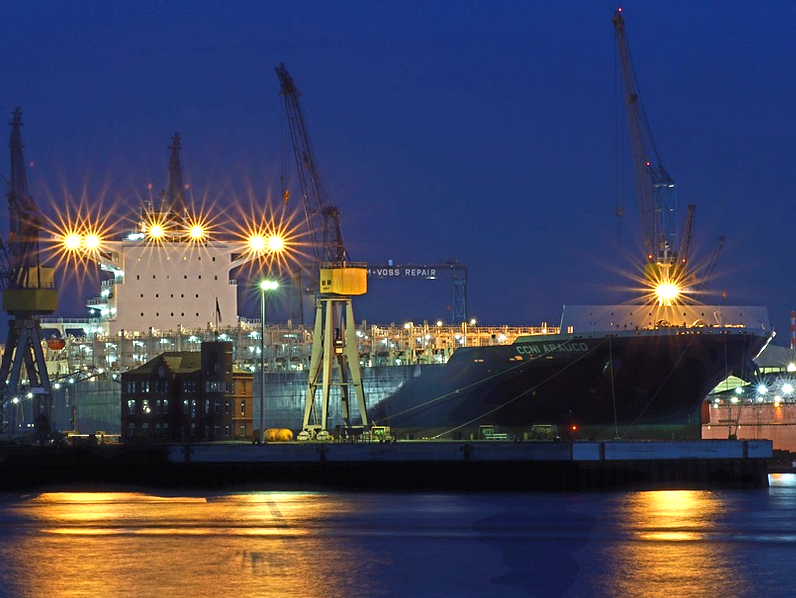It is possible to mitigate against the risks inherent in the industry

The ship finance landscape has changed fundamentally over the past decade since the turmoil in the global financial markets and the beginning of the shipping crisis. Several then-industry leading banks have exited or significantly scaled down their shipping activities amid soaring losses.
Historically shipowners’ equity was leveraged through loans from banks with the vessel used as collateral for the debt. Typically, banks would provide debt of between 60 – 70% of the value of the vessel, with the balance made up by owner’s equity. Mezzanine debt tranches also became a feature in capital structuring. In 2008, the shipping lending market had been estimated to be larger than $500 billion in the western world.
As a result of increased banking regulation and prolonged market weakness, access to traditional bank debt for funding vessels has become increasingly limited, with banks generally focussing on existing relationships and larger companies with stronger balance sheets, and leverage levels falling to the 50 – 55% range. This has increased the pressure on small and medium-sized companies to access cost-efficient leverage to fund vessel acquisitions.
While the level of funding being made available by banks has reduced markedly, there remains a significant new-build orderbook for which support from debt / capital markets will be required. Additionally, there remains an underlying second hand market for ships which, while currently lower in activity, also requires funding to be made available.
In part, the funding vacuum created as a result of the exit of many of the industry leading banks – and the reduced leverage being made available by the remining players – has been filled by institutional investors and private equity.
Funds usually have more flexibility in extending credit and structuring deals as they are much less regulated than banks; and funds can extend riskier types of credit that banks are not allowed to engage in. As such, funding from institutional investors / private equity can operate in a debt structure alongside senior bank debt to provide owners with aggregate leverage in the 60 – 70% range which shipowners have generally looked to achieve.
Fundamental Financing Risks
Irrespective of the change in the financing dynamic, the challenges faced by the capital markets in considering the provision of shipping debt have remained fundamentally unchanged. Interest rates, charter rates, operating costs and residual values remain the key variables in projecting future vessel cash flows and, consequently, a vessel’s ability to meet scheduled debt service from trading, and ultimately, for residual debt at maturity to be repaid through either a refinancing or sale at that point in time.
With bank’s generally focussing on shipping companies with strong corporate balance sheets, which may be seen as a mitigant for some of the aforementioned risks, the balance sheets of small to medium sized companies may not be so sufficiently robust as to provide the comfort required.
Consequently, in order to attract funding from institutional investors / private equity firms to bridge the gap between senior bank debt and target leverage, or indeed fully provide the required leverage level, smaller ship owners may be required to consider ways of credit enhancing the investment proposition, particularly in relation to income levels and future vessel values, which provide the source of repayment of any debt.
Income Risk Mitigation
The acquisition of vessels accompanied by long term charters, either from the seller or an independent third party, is well established in the shipping industry.
Such charter contracts are designed to provide prospective lenders with comfort in respect of the vessels future operating cash flow generation. They are aimed at providing a clear line of sight to a vessel’s earnings capabilities over the agreed charter term and, as a result, the ship’s ability to cover scheduled debt service requirements such as senior bank debt principal and interest and dividend visibility for institutional investors / private equity in the funding structure.
The charter agreements provide a mitigant to general market rate volatility, and a lending assessment would consequently consider the balance sheet strength of the charterer, and as a result its ability to honour charter payment obligations over the proposed charter term. Clearly, therefore the quality of the proposed charterer is of prime importance.
Ultimately, however, the charter counterparties would generally have significant, wider exposure to the shipping markets, either through operating their own fleets or through having a number of similar chartering, or indeed lease payment arrangements. As a result, a downturn in the shipping markets could have a large impact on the charter counterparty, and consequently its ability to meet scheduled charter payments.
Non-payment of the agreed charter, particularly during a cyclical downturn, would consequently have a material impact on the shipowner, who may be required to rely on internal resources to maintain operations, or in a worse case scenario be faced with a loan default and repossession.
Charterparty / loan repayment risk may be mitigated through a third party guarantee / insurance policy. Subject to agreed terms Klapton can provide coverage for charterparty payment default thus adding additional comfort to potential funders. Such coverage may be in the form of a guarantee for the payment of scheduled debt service with Klapton taking security over the period time charter agreement.
Residual Value Risk Mitigation
Vessel values are characterised by cyclical volatility, with the price of ships subject to significant swings from any identified median point. In terms of the supply side, key drivers of market volatility are a function of new-build activity and disposals for demolition. Demand side is, in effect, driven by the state of the global economy, with a global recession constraining tonnage demand while growth drives increased reliance on seaborne transportation. More localised economic trends also play an important factor.
The volatile nature of ship values is therefore a critical risk in any appraisal for the provision of 3rd party finance, recognising that both banks and institutional investors have a relatively short time horizon compared to the working life of a ship. While, historically, senior bank debt would have had tenors of around 7 years, the introduction of capital regulations has seen this shorten to around 5 years. In terms of institutional investors, exits are generally expected within a three-year horizon. The value of the vessel at such exit points can consequently have a material impact on the returns to institutional investors / private equity when involved in a shipping debt structure, where it is not outside the realms of possibility that at a cyclical low point, there is a risk of capital loss.
Clearly, in such a scenario, the approach of extending the funding is an option. However, to provide institutional investors with an alternative to this, and to afford more visibility in respect of returns from the investment, it is possible to mitigate the residual value risk through the use of residual value insurance / investment protection guarantees as credit enhancements.
Such instruments, which can be provided by Klapton, provide certainty in respect of a base line value for the ship which would be covered at the pre-agreed exit points.
Conclusion
It is evident that the dynamics of ship finance have changed significantly following the global financial crisis, with small to medium sized owners being required to look for less traditional sources of leverage to support their growth ambitions.
While institutional investors / private equity have looked to fill the funding void, the volatile nature of the shipping markets still causes pause for thought, and liquidity to owners remains relatively scarce.
Credit enhancements are available to mitigate against the risks inherent in the industry and, consequently provide comfort to providers of capital. By combining all of the above ship owners should be able to secure the required level of debt to leverage up on available equity to achieve their growth ambitions.
Douglas Newton : Head of Sector, Maritime Sureties
Photo by flobertovoss / under simplified Pixabay licence


